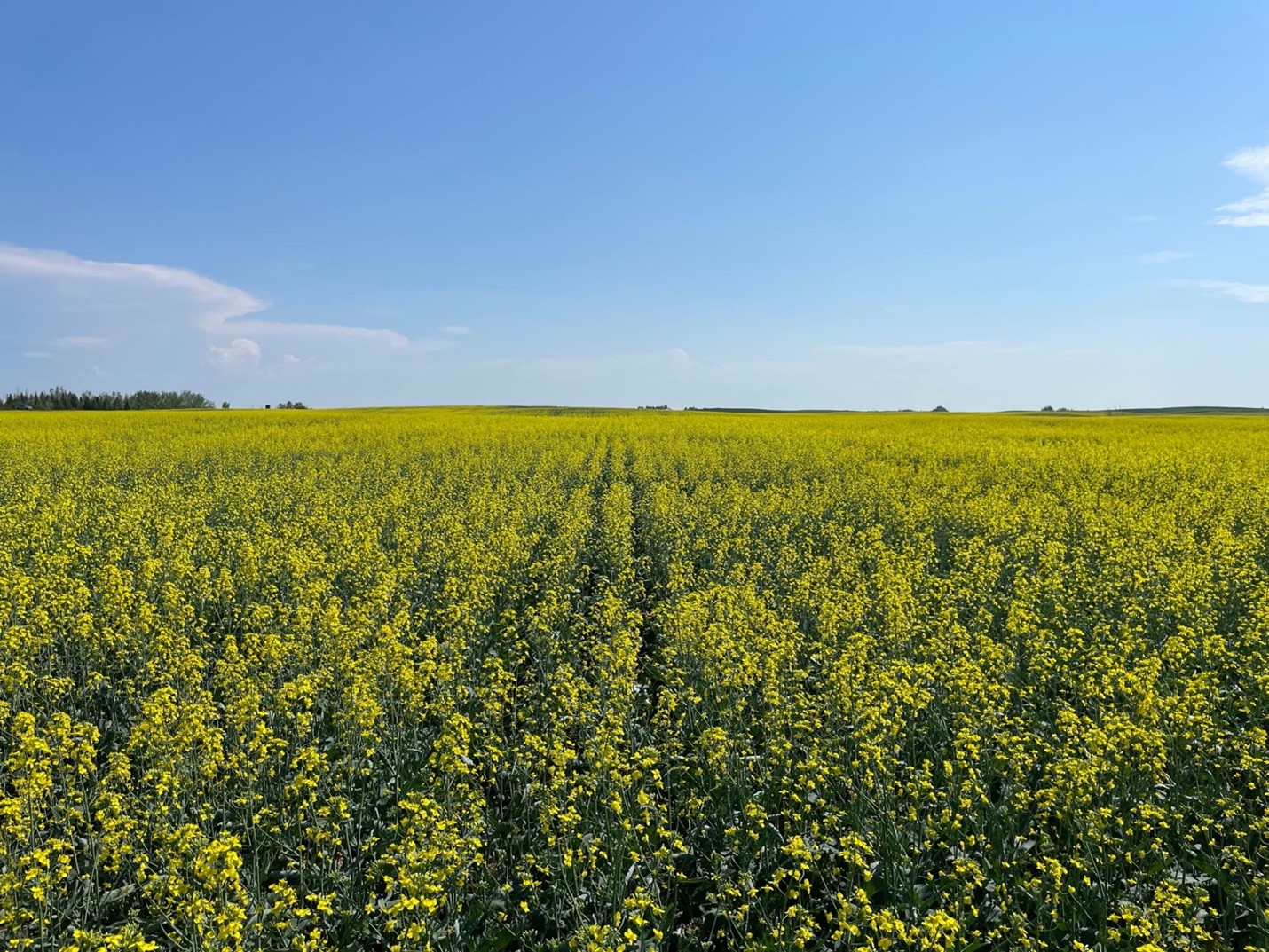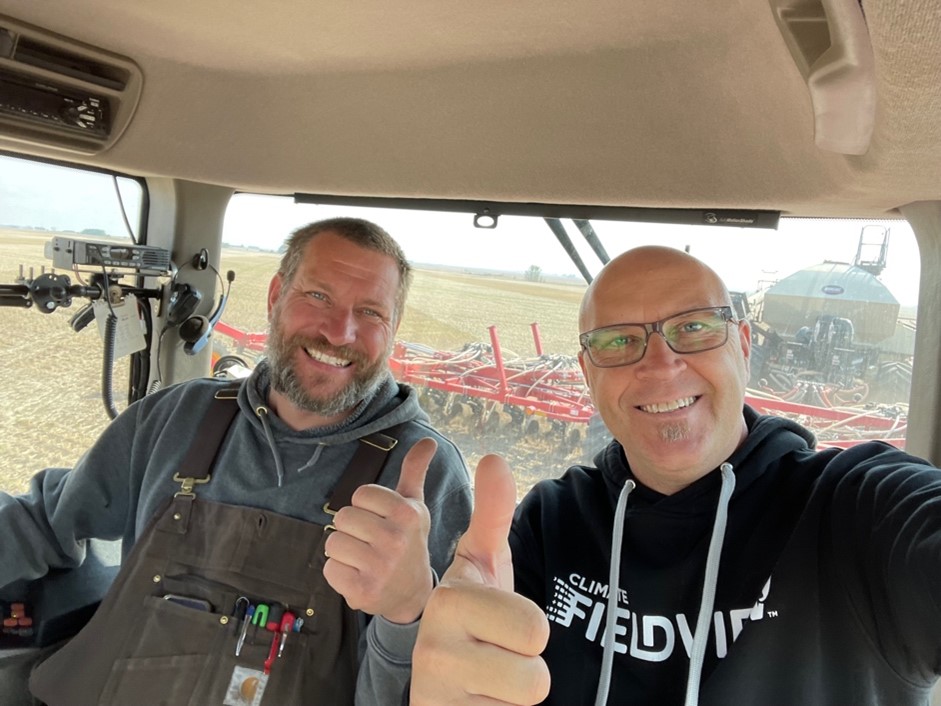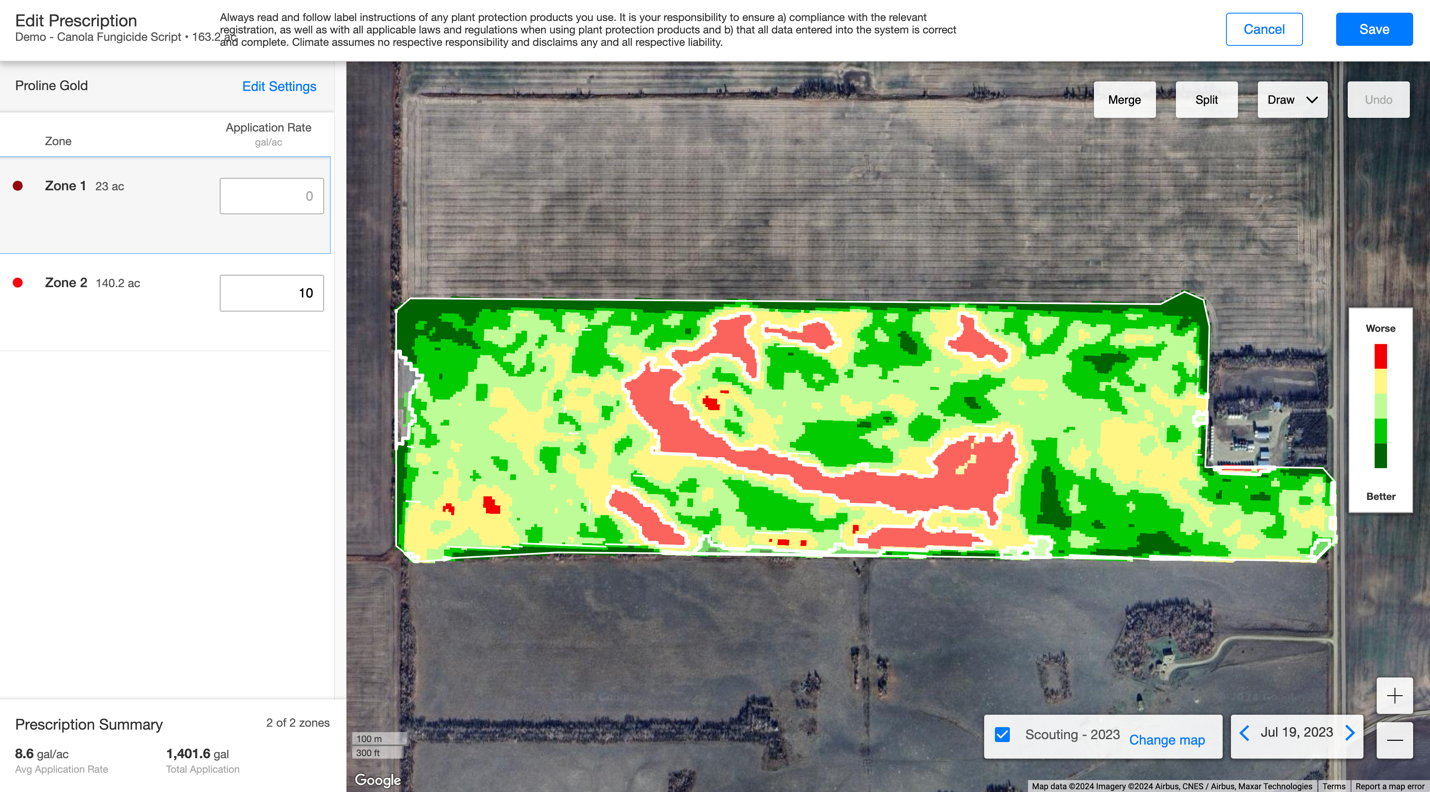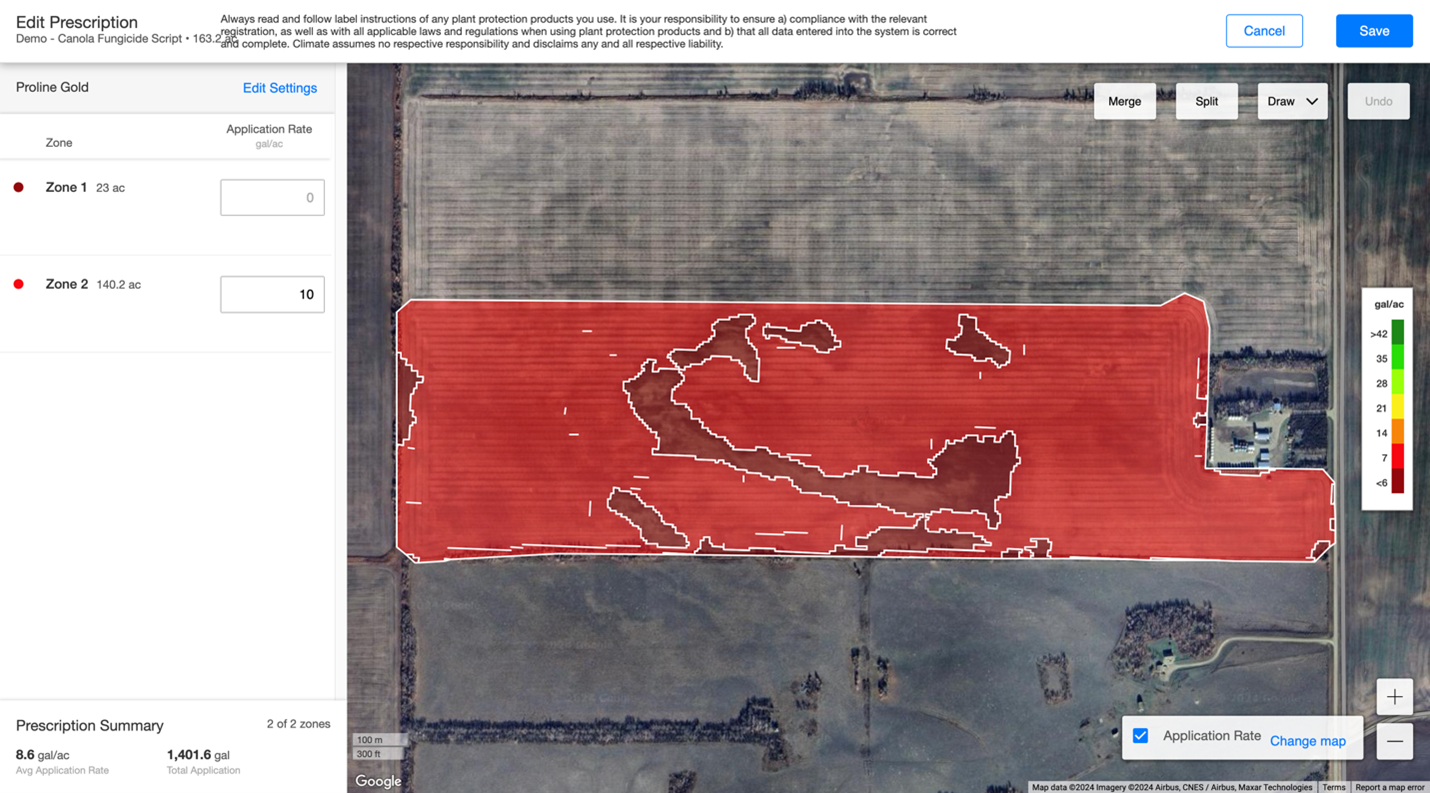
With farm margins as tight as ever, farmers are looking for ways to optimize their fungicide budget. But just how is that done to help maximize yield and quality in different crops and growing conditions. FieldView’s fungicide scripting tool is just the ticket.
Jarrett Lewin is a data-driven producer who grows canola, soft white wheat and oats on 8,250 acres near Unity, SK. Lewin uses FieldView to collect data on everything from seeding rates to inputs to yield results, then uses that data to guide farm decisions. In 2023, he field-tested a fungicide scripting tool available to him through the platform.
“The technology is incredible. It did exactly what it was supposed to do,” he says, adding that he’ll use the scripting tool again in 2024, but he’s being cautious because he thinks the tool’s return on investment (ROI) is crop dependent. “It comes down to what crop you’re growing, and it works best knowing what you’re trying to accomplish.”

Jarrett Lewin (left) and Bayer’s Rob Makowsky seed Jarrett’s canola field, shown below, last spring.
Follow the script
Fungicide scripting does what the name implies, says Liam McCarthy, a digital account specialist (DAS) with Bayer. In the same way that a script lays out scene-by-scene instructions for what happens on a movie set, fungicide scripting sets digital instructions for fungicide application.
A script is based on current satellite images of each field. Since historical data isn’t necessary, new subscribers can access a fungicide script the year they sign up. The scripting tool takes images captured through FieldView and uses them to assess plant biomass in a field. Since low biomass areas are less favourable to disease spread, the script programs certain spray nozzles to turn off when they pass over those zones.
“I would say that it is an easy-to-use tool that allows farmers to make sure they’re applying fungicide exactly where they need it,” says McCarthy.
McCarthy helps farmers troubleshoot the application and, when necessary, he’ll even visit their fields. “People like how it creates the zones automatically and they like the batch exporting — you can make a bunch of different scripts and export all of them at the same time,” he says. “Just load them into the monitor and you’re good to go.” Customers tell him it takes as little as five minutes for the tool to generate a script for each field.
Most new users double check the data with a ground test that checks for high and low biomass areas, says McCarthy. “They’re never disappointed. What they see on the ground matches the digital data.”
Based in western Ontario, most of McCarthy’s clients grow beans and corn. Customers tell him fungicide scripting works especially well for those contemplating a second fungicide application in soy or edible bean fields. “Even under heavy disease pressure, there’s some value in making sure that you’re only applying it where you really need it,” explains McCarthy.
On the other hand, he says some corn growers in his region say they’re hesitant to ever turn off a nozzle because, for them, the issue is disease prevalence. These producers know they’ve got a yield-dropping disease problem and they want to optimize control, he says, so they blanket spray.

This is the FV-generated field map based on crop (in this case canola) biomass. FV uses this map to generate a fungicide script based on where disease risk is deemed to be higher.

This image shows the final script generated for this field. You can see the field has been categorized into two zones, each receiving a different application rate.
Know the crop, understand the goal
Lewin’s on-farm research showed similar issues with canola versus wheat. In 2023, he tested the fungicide scripts on a quarter section of canola and on 40 per cent of his soft white wheat.
Working with Rob Makowsky, the Bayer DAS for his area, Lewin chose his field test sites and generated fungicide scripts with plans to separately harvest, weigh and grade both crops grown in the scripted zones. When testing new crop varieties, Lewin trials them over three years, moving from 40-acre plots up to 400 acres by year three. “One year doesn’t tell you anything,” he says.
When he evaluated fungicide scripting performance, he had mixed results. “With canola, I found a slight increase on ROI,” says Lewin. That ROI was high enough that he’s prepared to run a similar test on two varieties of canola in 2024, both of which are less susceptible to disease.
The soft white wheat was a different story. Lewin adjusted the recommended script so that nozzles were shut off less frequently than it suggested — a precautionary measure based on his knowledge of disease pressure typical for his area. “The script did exactly what it was supposed to do but I noticed a significant quality difference where I did not apply the fungicide,” he says. In other words, script execution was spot on, but wheat quality was lower in the areas where nozzles had been turned off.
What Lewin lost in wheat quality by using less fungicide in some areas isn’t a loss he’s willing to take across all his wheat acres. Still, that might change if he found a soft white wheat variety that’s less susceptible to fungal disease.
For now, it all comes down to resources, a concept Lewin measures in money and time. The wheat script didn’t cost him much time but the money he saved wasn’t worth it. Whereas on the canola front, it was. “I want to do whatever I can do for my crop. That’s my job.”

“It is an easy-to-use tool that allows farmers to make sure they’re applying fungicide exactly where they need it”
Liam McCarthy
DIGITAL ACCOUNT SPECIALIST
BAYER
